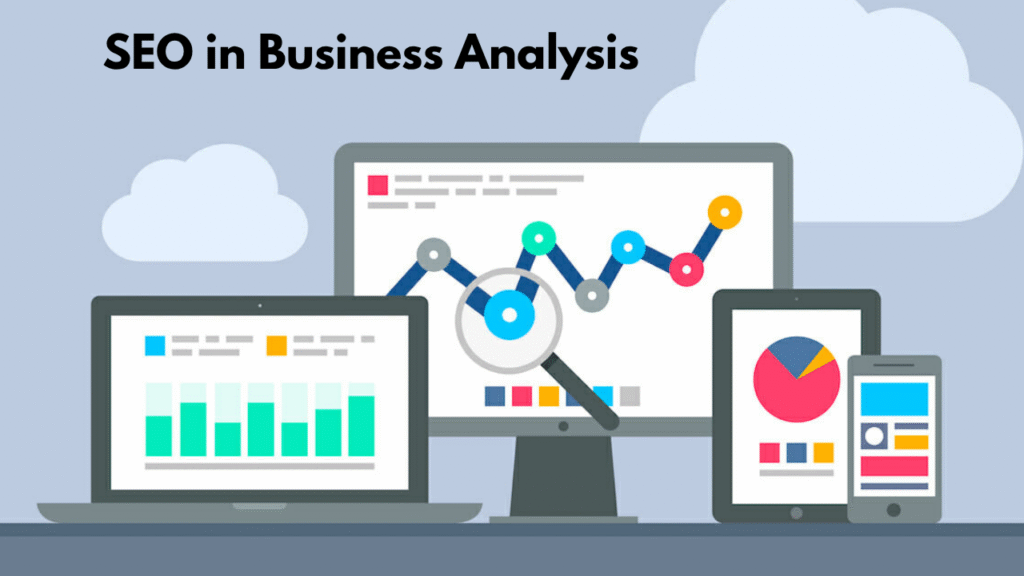In the modern digital world, if your SEO in Business Analysis is not visible on the Internet, it can also be invisible. This is where research optimization (SEO) and commercial analysis (BA) combine efforts. At first glance, two completely different areas rooted in marketing, the other one may appear to be in the data, but together they create a powerful engine that stimulates growth, visibility and strategy.
Let’s take a look at how references play a crucial role in commercial SEO in Business Analysis and how they cultivate long-term success in digital development environments in development.
What is SEO? It’s not just keywords!
If you think that the reference is only a keyword and a reverse link, think again. It’s more than filling out content using trend sentences. SEO in Business Analysis is about understanding user intent, content optimization, search engine structure, and ensuring that website compliance is what people are actually looking for.
In commercial terms? seo = visibility + trust + traffic = potential revenue.
Commercial Analysis: Strategic Brain
So let’s talk about commercial analysis. These are not just graphics and surveillance panels. Commercial analysts are immersed in the data to uncover models, provide trends, and recommend real information. They ensure that each commercial decision is rooted in reality rather than assumptions.
Next, imagine what’s going on when data-controlled ideas respond to SEO strategies. This is the beginning of magic. When references and commercial analysis intersect The case is as follows:
SEO and BA thrive according to the data. SEO in Business Analysis gives us metrics like traffic, bounce rates, conversion rates, click-throughs, and rankings. Business analysts interpret these numbers to find:
What’s working?
What’s not?
Where are users dropping off?
What content drives sales?
This intersection helps businesses move from “I think this works” to “I know this works.”
Understanding User Behavior Through SEO Analytics
Want to know what your audience is really looking for? SEO data provides clues through:
Search queries
Pages with high bounce rates
Top-performing content
Traffic sources
Business analysts take this data and dig deeper. For example, if a blog post drives traffic but has zero conversions, the issue isn’t visibility it’s probably content mismatch or weak CTAs. BA helps spot and solve these gaps.
Keyword Research as a Market Analysis Tool
Here’s a fun fact: keyword research doubles as market research. When you analyze what people search for, you get insight into their pain points, interests, and needs.
Business analysts can use this data to:
Spot new market trends
Tailor product offerings
Improve customer experience
So yes, a good keyword can be the start of a great business strategy.

SEO Reporting: A Goldmine for Strategic Planning
SEO tools like Google Analytics, SEMrush, Ahrefs, and Google Search Console don’t just give you vanity metrics they tell a story. A story that includes:
Who’s visiting your site
What they’re clicking on
How long they’re staying
What leads to a sale
Business analysts love stories like these. They help in crafting conversion funnels, adjusting marketing budgets, and predicting ROI.
Enhancing Customer Journey Mapping with SEO Insights
Think of the customer journey like a road trip. SEO tells you where people come from (traffic sources), where they go (pages visited), and where they bail out (exit pages).
With this data, business analysts can:
Improve site navigation
Optimize landing pages
Reduce friction in the buying process
That’s how you turn browsers into buyers.
SEO and BA in Competitive Benchmarking
Want to beat your competitors? Combine SEO audits with business intelligence. Check:
Which keywords they rank for
How their traffic compares to yours
What content strategies work for them
Then, use that insight to reverse engineer your own winning strategy.
Predictive Analysis: SEO Trends and Future-Proofing
SEO isn’t static. What works today might flop tomorrow (thanks, Google algorithm updates!). But here’s where BA steps in. By identifying patterns in SEO data, business analysts can:
Forecast emerging trends
Prepare for search engine changes
Adjust content plans proactively
This keeps businesses agile and one step ahead of the competition.
Improving ROI by Aligning SEO with Business Goals
At the end of the day, SEO in Business Analysis isn’t about vanity metrics it’s about business impact. By aligning SEO strategies with specific business KPIs (like sales, lead generation, or signups), business analysts ensure that every piece of content, every technical fix, and every optimization contributes to the bigger picture.
This tight integration helps businesses stop wasting money on strategies that don’t work and double down on the ones that do.
Read More: On-Page to Off-Page: Understanding All Parts of SEO Explained Simply
Conclusion
When SEO in Business Analysis work in silos, opportunities get missed. But when they collaborate? That’s where businesses get smarter, faster, and more profitable.
SEO tells you what’s happening. Business analysis tells you why it’s happening and what to do next. Together, they don’t just boost your Google rankings they sharpen your strategy, improve customer experiences, and ultimately grow your business.

